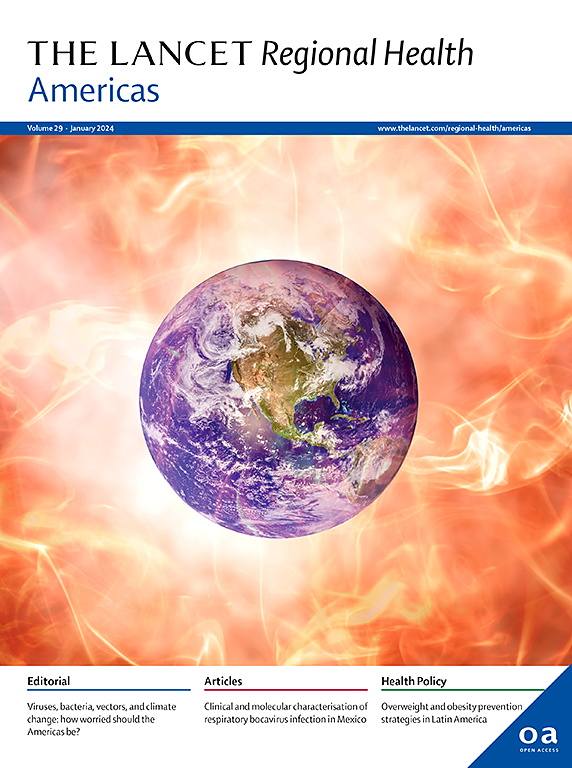Spatiotemporal analysis of substance use disorder mortality in the United States: an observational study of emerging hotspots and vulnerable populations (2005–2020)
IF 7
Q1 HEALTH CARE SCIENCES & SERVICES
引用次数: 0
Abstract
Background
The escalating substance use disorder (SUD) crisis in the contiguous United States (US), with rising mortality since 1999, necessitates a spatiotemporal analysis to identify high-risk areas and vulnerable populations. This study examines the geospatial distribution and clustering patterns of SUD mortality, assessing disparities by race and urban-rural status.
Methods
We analyzed county-level ecological data on SUD-related deaths from the Centers for Disease Control and Prevention (CDC) from 2005 to 2020. Using spatial scan statistics, we identified significant clusters of elevated SUD mortality and assessed shifts over time. The analysis stratified results by race (White and Black subpopulations) and urban-rural classification to explore disparities.
Findings
Among 3142 U.S. counties, we identified 27 significant spatiotemporal clusters of elevated SUD mortality, primarily emerging post-2013 and persisting until 2020. The epidemic's epicenter shifted from the western to the eastern U.S. around 2016. Clusters in the White population (n = 26) had an estimated mortality rate of 28.42 per 100,000 person-years (95% confidence interval [CI]: 28.30–28.54), compared to 14.83 per 100,000 person-years (95% CI: 14.74–14.92) outside clusters. For the Black population (n = 17), the mortality rate was 33.16 per 100,000 person-years (95% CI: 32.80–33.51) within clusters, versus 13.36 per 100,000 person-years (95% CI: 13.14–13.59) outside. Clusters in the Black population emerged later, mostly after 2013, while White clusters followed a pattern similar to the general population. The urban SUD mortality rate was 1.30 per 10,000 per year, while the rural mortality rate was 1.03 per 10,000 per year. Within clusters, urban counties had a mortality rate of 1.61 per 10,000, compared to 0.97 per 10,000 outside. Rural counties had 1.43 per 10,000 in clusters, while non-clustered rural areas had 0.81 per 10,000.
Interpretation
The shifting geographic and racial patterns of SUD mortality underscore the need for targeted, region-specific interventions. The increasing impact on Black populations and urban centers in the East highlights the importance of equitable access to treatment and harm reduction services. Real-time surveillance and tailored urban-rural strategies are essential to mitigate the evolving crisis.
Funding
None.
美国物质使用障碍死亡率的时空分析:新兴热点和弱势人群的观察研究(2005-2020)
自1999年以来,美国周边地区的物质使用障碍(SUD)危机不断升级,死亡率不断上升,有必要进行时空分析,以确定高危地区和弱势人群。本研究考察了SUD死亡率的地理空间分布和聚类模式,评估了种族和城乡状况的差异。方法分析2005 - 2020年美国疾病预防控制中心(CDC)提供的与sud相关死亡的县级生态数据。利用空间扫描统计,我们确定了SUD死亡率升高的显著集群,并评估了随时间的变化。分析结果按种族(白人和黑人亚群)和城乡分类进行分层,以探索差异。在美国3142个县中,我们确定了27个显著的SUD死亡率升高的时空集群,主要出现在2013年之后,并持续到2020年。2016年左右,疫情的震中从美国西部转移到东部。白人群体(n = 26)的估计死亡率为28.42 / 10万人年(95%置信区间[CI]: 28.30-28.54),而非白人群体的死亡率为14.83 / 10万人年(95% CI: 14.74-14.92)。对于黑人人群(n = 17),集群内死亡率为每10万人年33.16人(95% CI: 32.80-33.51),而集群外死亡率为每10万人年13.36人(95% CI: 13.14-13.59)。黑人群体出现较晚,主要是在2013年之后,而白人群体则遵循与普通人群相似的模式。城市的SUD死亡率为每年万分之1.30,而农村的死亡率为万分之1.03。在集群内,城市县的死亡率为1.61 / 10 000,而城市以外的死亡率为0.97 / 10 000。农村县每万人中有1.43人聚集在一起,而非聚集的农村地区每万人中有0.81人。SUD死亡率的地理和种族模式的变化强调了有针对性的、针对特定区域的干预措施的必要性。对东部黑人人口和城市中心的影响越来越大,突出了公平获得治疗和减少伤害服务的重要性。实时监测和量身定制的城乡战略对于缓解不断演变的危机至关重要。
本文章由计算机程序翻译,如有差异,请以英文原文为准。
求助全文
约1分钟内获得全文
求助全文
来源期刊

Lancet Regional Health-Americas
Multiple-
CiteScore
8.00
自引率
0.00%
发文量
0
期刊介绍:
The Lancet Regional Health – Americas, an open-access journal, contributes to The Lancet's global initiative by focusing on health-care quality and access in the Americas. It aims to advance clinical practice and health policy in the region, promoting better health outcomes. The journal publishes high-quality original research advocating change or shedding light on clinical practice and health policy. It welcomes submissions on various regional health topics, including infectious diseases, non-communicable diseases, child and adolescent health, maternal and reproductive health, emergency care, health policy, and health equity.
 求助内容:
求助内容: 应助结果提醒方式:
应助结果提醒方式:


